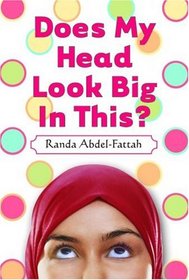Helpful Score: 3
Abdel-Fattah handles serious issues faced by modern Muslims well, but bites off a bit more than she can chew. She tries to address too many problems, which makes the book drag a bit at times. A narrower focus would have been more effective, but this is still a good read overall. The main character is very likeable and will appeal to any teenage girl, Muslim or not. I recommend this book to anyone who wants to learn more about life as a Muslim presented in an engaging format.
In a charmingly descriptive chain of thought, Australian-Palestinian Amal decides to wear the Muslim scarf, the hijab, after watching Rachel from Friends singing "Copacabana" in "a hideous bridesmaid's outfit at her ex's wedding". It's the kind of intuitive moment we've all had, and the fact that Amal hinges such a major life decision on it gives her immediate plausible humanity.
We've always wanted to know what it's really like, the life of the visible minorities. John Howard Griffin classic, "Black Like Me", where the other darkens his skin and travels through pre-civil rights America and Barbara Ehrenreich's "Nickel and Dimed", where the author tries to live on minimum wage jobs are examples. Perhaps one of the strengths of "Does My Head" is that really not much does happen after Amal dons her hijab. This book does not deal with heady issues, nor does it take place in war torn Afghanistan. Amal's father and mother are wealthy professionals, she goes to a prestigious private school and her big problems are passing Australia's comp and getting caught passing notes in school.
The significance of this book is how the wearing of her hijab affects each one of her relationships, her relationship with her parents, with her traditional uncle and her aunt, with her nontraditional uncle and aunt, with her Muslim girlfriends, with her non Muslim girlfriends, with sympathetic school friends, with antagonistic ones, with school faculty, and even with casual strangers. The honesty of Amal's voice and the complexity of all these relationships is where the success of Randa Abdel-Fattah's story lies.
We've always wanted to know what it's really like, the life of the visible minorities. John Howard Griffin classic, "Black Like Me", where the other darkens his skin and travels through pre-civil rights America and Barbara Ehrenreich's "Nickel and Dimed", where the author tries to live on minimum wage jobs are examples. Perhaps one of the strengths of "Does My Head" is that really not much does happen after Amal dons her hijab. This book does not deal with heady issues, nor does it take place in war torn Afghanistan. Amal's father and mother are wealthy professionals, she goes to a prestigious private school and her big problems are passing Australia's comp and getting caught passing notes in school.
The significance of this book is how the wearing of her hijab affects each one of her relationships, her relationship with her parents, with her traditional uncle and her aunt, with her nontraditional uncle and aunt, with her Muslim girlfriends, with her non Muslim girlfriends, with sympathetic school friends, with antagonistic ones, with school faculty, and even with casual strangers. The honesty of Amal's voice and the complexity of all these relationships is where the success of Randa Abdel-Fattah's story lies.




